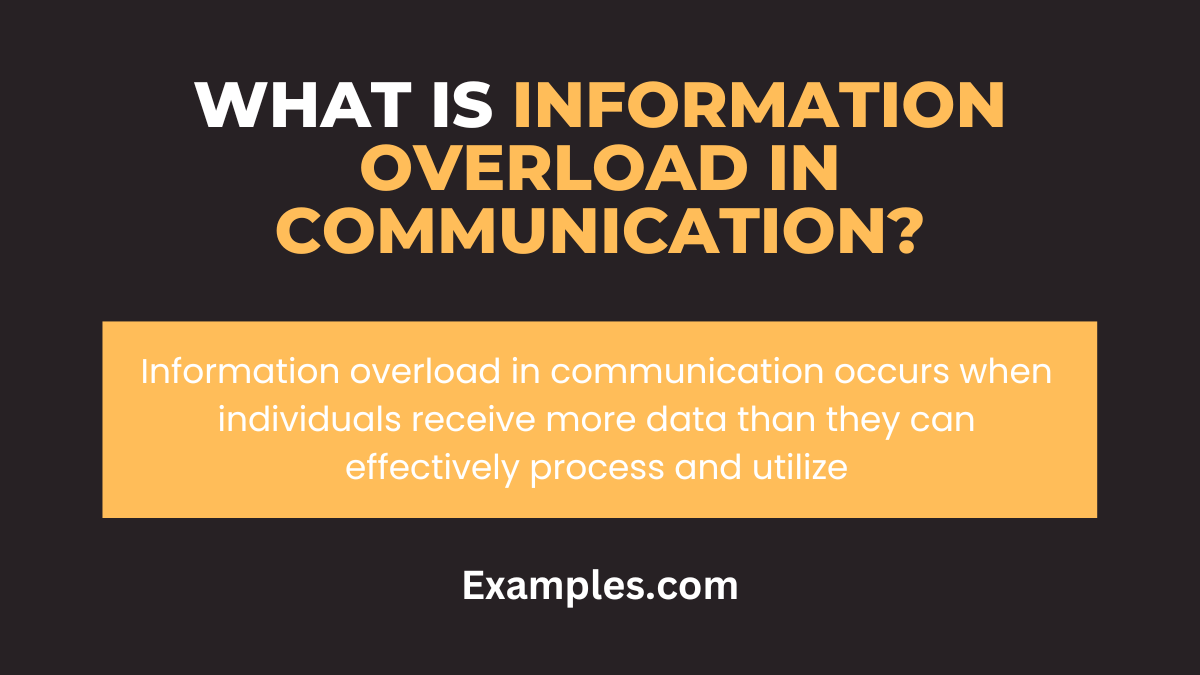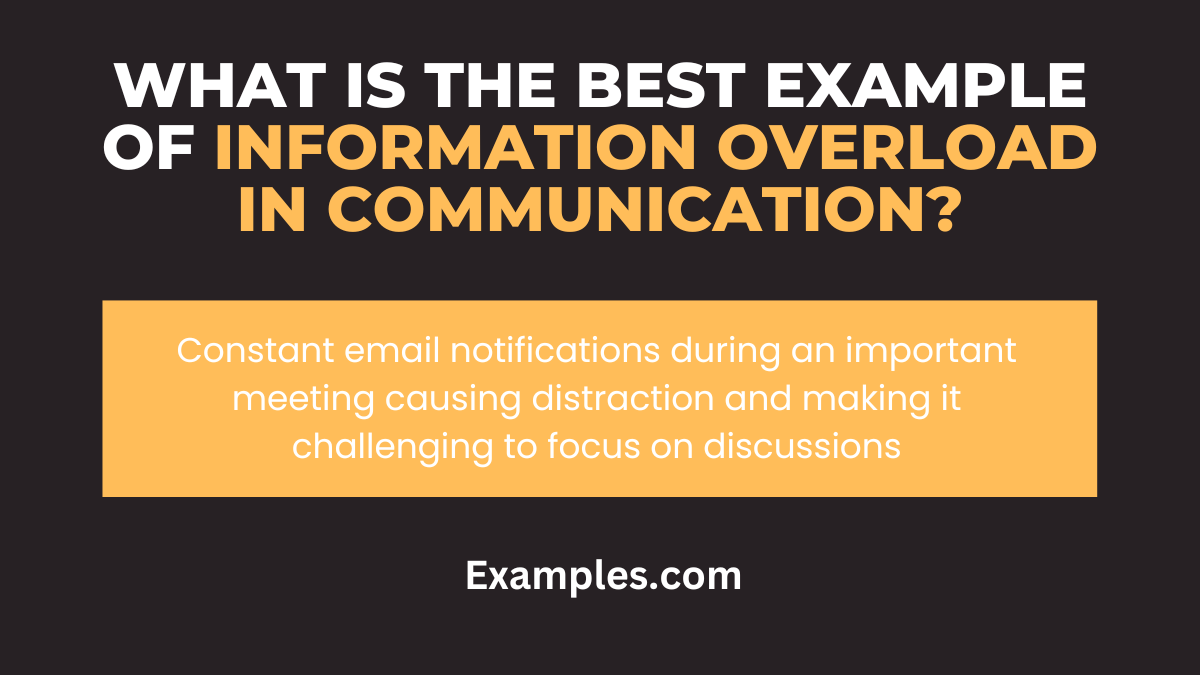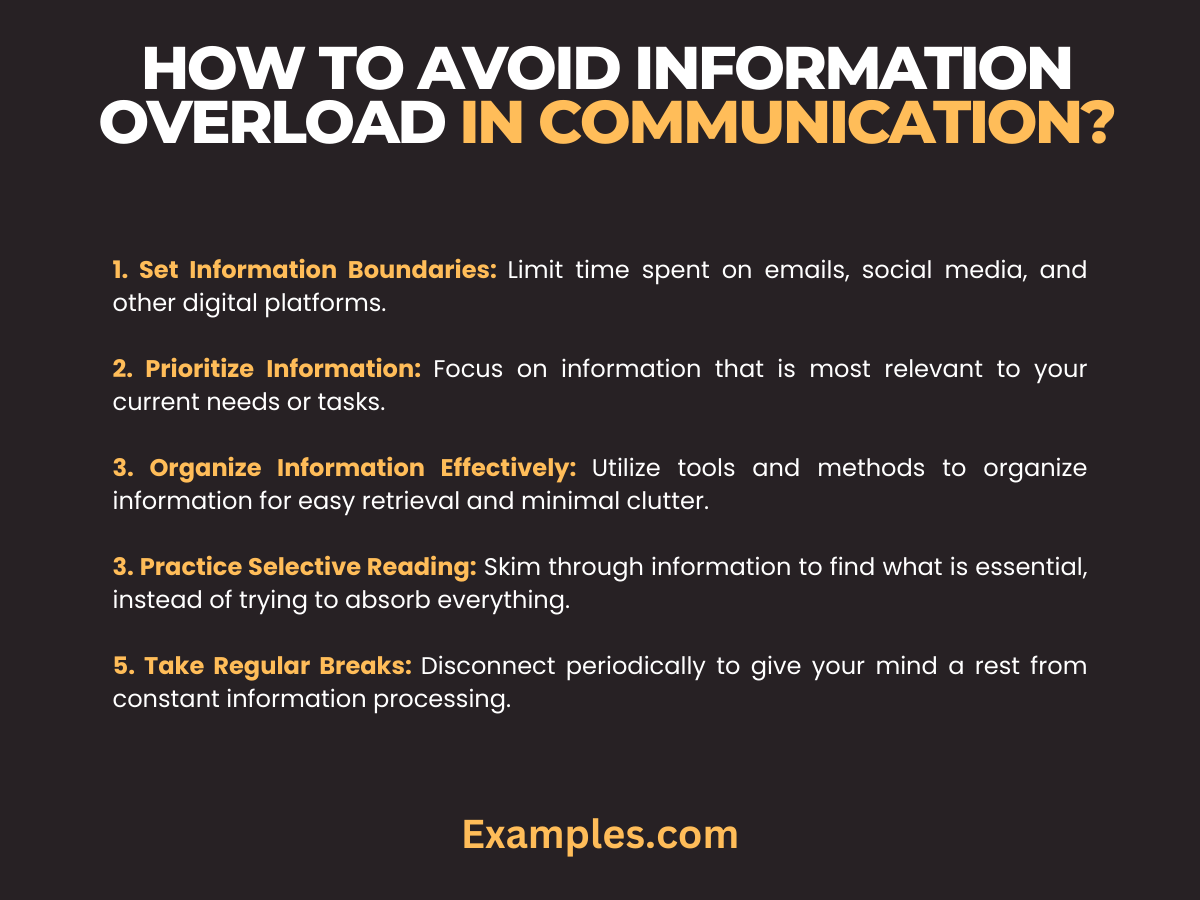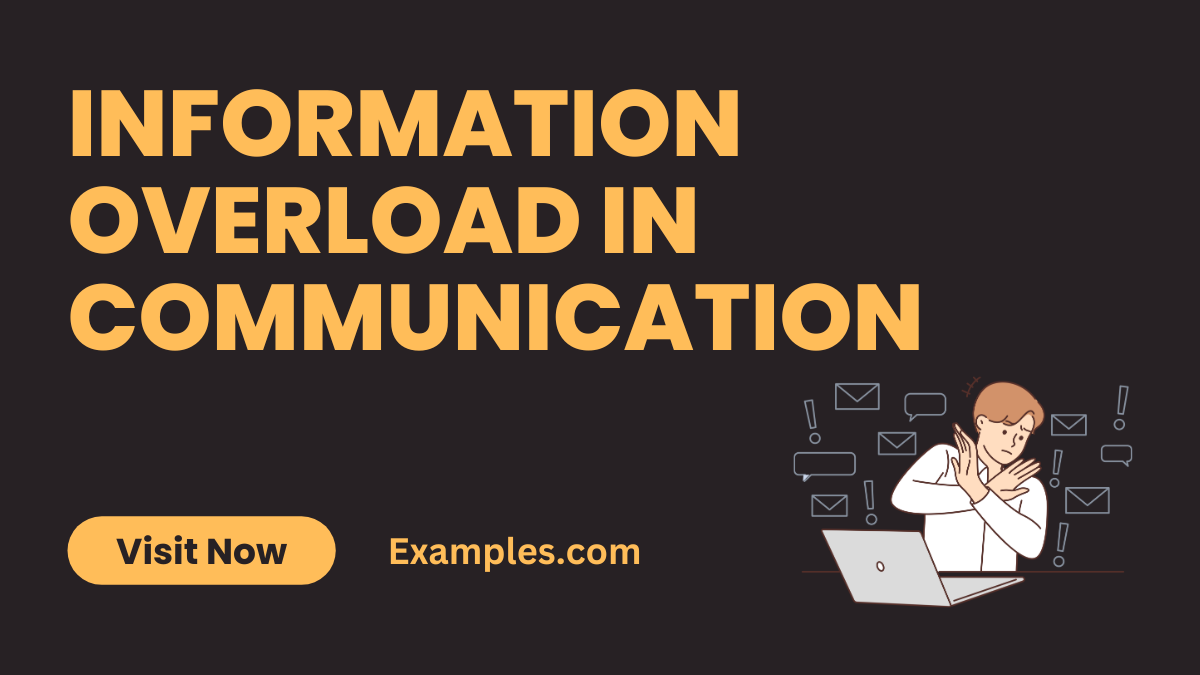19+ Information Overload in Communication Examples
In our hyper-connected world, “Information Overload in Communication” has become a pressing challenge. This comprehensive guide delves into the heart of information saturation in our daily interactions, exploring both its nuances and widespread impacts. We’ll uncover practical strategies to manage and mitigate information overload, ensuring more effective and meaningful communication. Whether it’s personal exchanges or professional dialogues, this guide aims to provide clarity in an age where information is abundant yet attention is scarce.
What is Information Overload in Communication?

Information overload in communication occurs when an individual is exposed to more information than they can process, leading to overwhelmed feelings, decision paralysis, and reduced comprehension. This phenomenon is increasingly prevalent in our digitally-driven world, where constant streams of data confront us.
What is the Best Example of Information Overload in Communication?

A prime example of information overload in communication is the modern workplace, where employees are bombarded with a continuous flow of emails, messages, reports, and meetings. This relentless influx often leads to decreased productivity and heightened stress.
20 Examples of Information Overload in Communication
Information Overload in Communication involves receiving too much information at once, leading to difficulty in processing, understanding, and decision-making. This overload often results in reduced effectiveness of communication and can be a significant barrier in various settings.
- During a meeting, presenting too many complex topics simultaneously – This overwhelms attendees, making it hard to focus on any single issue effectively.
- Receiving multiple emails with extensive content on different subjects – Sorting through and understanding each email becomes challenging.
- In a classroom, when a teacher covers several chapters in one lecture – Students struggle to absorb and retain the key points from each chapter.
- A manager sending lengthy, detailed reports frequently – Employees find it hard to extract the essential information needed for their tasks.
- In healthcare, a doctor giving a patient extensive information about various treatment options all at once – The patient may find it difficult to comprehend and make informed decisions.
- Attending a conference with back-to-back presentations on diverse topics – Participants may experience difficulty in retaining information from each presentation.
- A salesperson providing too many product options and details to a customer – This can lead to confusion and difficulty in making a purchase decision.
- During software training, introducing numerous features in one session – Trainees might not remember how to use each feature effectively.
- A flood of notifications from multiple communication apps – This can distract and reduce productivity.
- A team brainstorming session with no structured agenda – Ideas get lost in the volume of suggestions, making it hard to focus on viable solutions.
- Reading a research paper with excessive jargon and complex data – It becomes hard for readers to grasp the main conclusions.
- Receiving an all-encompassing project brief with numerous requirements – This can overwhelm team members, causing delays in project initiation.
- In marketing, bombarding consumers with too many advertisements and messages – This may lead to disengagement from the brand.
- Attending a training program covering a wide range of unrelated topics – Participants might find it hard to connect the dots and apply what they’ve learned.
- In customer service, facing a barrage of questions and complaints simultaneously – This can lead to inefficient and unsatisfactory responses.
- Online courses with lengthy, content-heavy modules without breaks or summaries – Students may struggle to keep up and understand the material.
- A news website with excessive articles, pop-ups, and multimedia content – Visitors might find it hard to focus on the news they are interested in.
- In social media, scrolling through a never-ending feed of diverse content – This can cause difficulty in focusing on relevant information.
- A legal document with too much technical language and clauses – Non-experts may find it challenging to understand the implications.
- In finance, receiving detailed reports on multiple investments simultaneously – Investors might find it hard to track the performance and make informed decisions.
Causes of Information Overload in Communication
- Excessive Digital Connectivity: In today’s digital era, constant connectivity through emails, social media, and messaging apps leads to a continuous influx of information.
- Multitasking Demands: The expectation to multitask in various communication channels simultaneously contributes to information overload.
- Volume of Information: The sheer volume of data available online and through various media channels can overwhelm individuals.
- Rapid Information Pace: The fast pace at which new information is generated and disseminated makes it challenging to process and retain.
- Lack of Information Filtering: Insufficient filtering mechanisms for relevant and irrelevant information can lead to an accumulation of unnecessary data.
How to Avoid Information Overload in Communication?

- Set Information Boundaries: Limit time spent on emails, social media, and other digital platforms.
- Prioritize Information: Focus on information that is most relevant to your current needs or tasks.
- Organize Information Effectively: Utilize tools and methods to organize information for easy retrieval and minimal clutter.
- Practice Selective Reading: Skim through information to find what is essential, instead of trying to absorb everything.
- Take Regular Breaks: Disconnect periodically to give your mind a rest from constant information processing.
Information Overload in Communication in the Workplace
- Increased Stress Levels: Employees bombarded with excessive information often experience heightened stress.
- Reduced Productivity: Constant interruptions from various communication channels can hamper focus and productivity.
- Impaired Decision-Making: Overload can lead to difficulty in making informed decisions due to too much information.
- Communication Breakdowns: Too much information can lead to misinterpretation or missing critical details in communications.
- Burnout Risk: Prolonged exposure to information overload can lead to employee burnout.
Effects of Information Overload in Communication
- Cognitive Strain: Processing too much information can lead to mental fatigue and reduced cognitive capacity.
- Decreased Quality of Interaction: Overload can impair the quality of interpersonal communications.
- Miscommunication Risks: Excess information can lead to misunderstanding and confusion.
- Reduced Attention Span: Constant influx of information can shorten attention spans.
- Impeded Learning: Information overload can hinder the ability to absorb and retain new information effectively.
Information overload in communication is paramount. This guide and its tips equip you to navigate this digital age challenge effectively. By filtering, prioritizing, and maintaining focus, you can ensure clear and meaningful interactions. Remember, a balanced approach is key to managing the overwhelming flow of information, enabling you to communicate with purpose and clarity.



